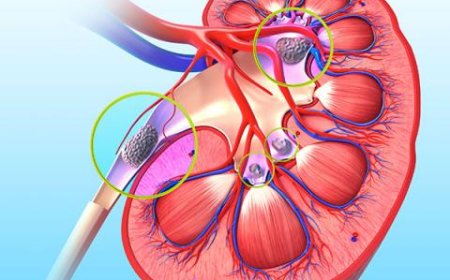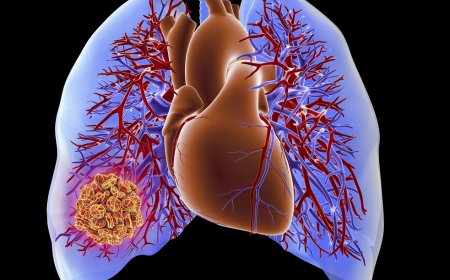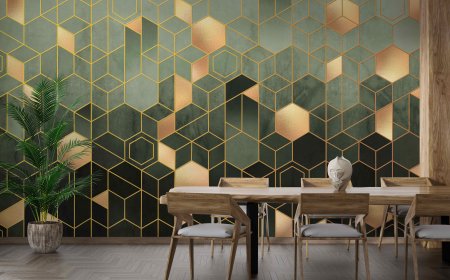How to Picnic at the Botanic Garden Lakes Albuquerque
How to Picnic at the Botanic Garden Lakes Albuquerque Picnicking at the Botanic Garden Lakes in Albuquerque is more than just a casual outdoor meal—it’s an immersive experience that blends natural beauty, quiet reflection, and community connection. Nestled within the 45-acre Albuquerque Biological Park, the Botanic Garden Lakes offer a serene escape from the urban rhythm of the city, surrounded by
How to Picnic at the Botanic Garden Lakes Albuquerque
Picnicking at the Botanic Garden Lakes in Albuquerque is more than just a casual outdoor meal—it’s an immersive experience that blends natural beauty, quiet reflection, and community connection. Nestled within the 45-acre Albuquerque Biological Park, the Botanic Garden Lakes offer a serene escape from the urban rhythm of the city, surrounded by native Southwestern flora, winding walking paths, and tranquil water features that reflect the sky like polished mirrors. Whether you’re a local resident seeking weekend tranquility or a visitor exploring New Mexico’s cultural and natural landmarks, learning how to picnic here effectively enhances your visit and ensures you leave with lasting memories.
This guide is designed to help you plan, prepare, and enjoy a perfect picnic at the Botanic Garden Lakes. From understanding park regulations to selecting the ideal spot, packing the right gear, and respecting the environment, every detail matters. This isn’t just about food—it’s about cultivating a mindful, sustainable, and deeply enjoyable outdoor ritual that honors the landscape and the people around you.
Step-by-Step Guide
Step 1: Research Park Hours and Seasonal Access
Before you pack your basket, verify the Botanic Garden Lakes’ operating hours. The Albuquerque Botanic Garden is open daily from 8:00 a.m. to 5:00 p.m., with extended hours during peak seasons (April–October). The lakeside picnic areas are accessible during garden hours, but certain zones may be closed for events, maintenance, or wildlife preservation. Always check the official website or call ahead to confirm access to the lakeside trails and designated picnic zones.
Seasonal variations matter significantly. Spring and fall offer the most pleasant temperatures—ideal for outdoor dining. Summer days can exceed 90°F, so plan for shade and hydration. Winter visits are quieter and offer unique photo opportunities with frost-kissed reeds and bare branches, though some facilities may have limited access. Avoid visiting during monsoon season (July–September) if possible, as sudden thunderstorms can make paths slippery and picnic areas unsafe.
Step 2: Choose Your Picnic Spot
The Botanic Garden Lakes feature multiple picnic-friendly zones, each with distinct advantages:
- North Lakeside Lawn: A wide, open grassy area with panoramic views of the water and distant Sandia Mountains. Ideal for groups and families. Offers the most shade from mature cottonwoods.
- South Pond Overlook: A quieter, elevated spot with benches and limited ground space. Best for couples or solo visitors seeking solitude and birdwatching opportunities.
- Herb Garden Pathway: A shaded, winding trail near the culinary herb beds. Perfect for a light snack with aromatic surroundings. Not ideal for large groups due to narrow pathways.
- Children’s Garden Pavilion: A covered pavilion with picnic tables, close to restrooms and water fountains. Great for families with young children.
Arrive early—especially on weekends—to secure your preferred location. Popular spots fill up quickly between 10 a.m. and 2 p.m. Use the garden’s interactive map (available on their website) to preview terrain, shade coverage, and proximity to amenities.
Step 3: Pack Smart and Light
Successful picnicking hinges on thoughtful packing. You’re walking on gravel paths and possibly grass, so prioritize lightweight, durable gear.
Essentials to Include:
- Insulated cooler with reusable ice packs (no loose ice—melting creates mess and attracts pests)
- Reusable plates, cups, utensils, and cloth napkins (avoid single-use plastics)
- Collapsible picnic mat or waterproof blanket (100% cotton or polyester with a PUL backing works best)
- Small trash bag (you must pack out all waste—no bins are available near lakes)
- Hand sanitizer and wet wipes (restrooms are nearby but not always close to your spot)
- Wide-brimmed hat, sunglasses, and sunscreen (UV index is high at 5,300-foot elevation)
- Lightweight bug spray (mosquitoes can be active near water at dusk)
- Portable speaker (optional, but keep volume low to preserve tranquility)
- Water bottles (at least 16 oz per person)
Food Suggestions:
- Whole grain wraps with hummus, roasted vegetables, and feta
- Local New Mexican chiles rellenos or green chile cheeseburgers (available from nearby vendors if you prefer not to cook)
- Seasonal fruit: peaches, apricots, or grapes (New Mexico is known for its orchards)
- Trail mix with pecans, dried apricots, and dark chocolate
- Homemade lemonade or iced hibiscus tea (locally sourced hibiscus is fragrant and refreshing)
- Mini quiches or savory muffins (easy to eat without utensils)
Avoid messy, sticky, or strongly scented foods like peanut butter sandwiches or fried chicken—these attract ants and birds, which can disrupt the natural balance and disturb other visitors.
Step 4: Arrive and Set Up
Upon arrival, enter through the main gate on Mountain Road NE. Follow signs to the Botanic Garden Lakes—there’s a clear walking path from the parking lot, approximately a 10-minute stroll. Once at your chosen spot, lay your mat or blanket on level ground, away from ant hills, wet soil, or low-hanging branches.
Position your cooler in the shade. If you brought a collapsible umbrella, set it up for sun protection. Avoid placing food directly on the ground—even on a mat—use a tray or board to prevent dirt transfer and make cleanup easier.
Keep your belongings organized. Use a small tote to store napkins, utensils, and condiments. Label your items if you’re with a group to avoid confusion. If you’re bringing children, designate a “play zone” away from the food area to prevent crumbs from scattering.
Step 5: Enjoy Mindfully
Picnicking is not just about eating—it’s about presence. Take time to observe your surroundings. Listen to the rustle of reeds, the call of red-winged blackbirds, the distant splash of a water lily frog. Watch dragonflies skim the surface of the lake. These moments transform a meal into a memory.
Engage with others respectfully. If you’re near another group, keep noise levels low. Avoid loud music or shouting. Share the space generously. If you see someone struggling to find a spot, offer to shift slightly to accommodate them.
Feed only yourself. Do not feed wildlife. Ducks, geese, and turtles are protected species, and human food can harm their digestive systems. Even bread, often thought to be harmless, causes nutrient imbalances and promotes algae growth in the lakes.
Step 6: Clean Up Thoroughly
Leave no trace. This is not just a rule—it’s a responsibility. Before you leave, conduct a full sweep of your area:
- Collect every crumb, wrapper, and napkin—even the tiny ones
- Double-check under your blanket for dropped utensils or bottles
- Dispose of all trash in the nearest designated bin (usually located near restrooms or the visitor center)
- Wipe down reusable items with wet wipes before packing
- Take your cooler and all personal belongings
Remember: The Botanic Garden is a living ecosystem. Your actions directly impact its health. A single plastic straw or food wrapper can be ingested by wildlife or clog water filtration systems. By cleaning up completely, you help preserve this sanctuary for future visitors.
Step 7: Extend Your Visit
After your picnic, consider exploring other areas of the garden:
- Walk the Desert Garden Loop to see cacti, agaves, and yuccas native to the Chihuahuan Desert.
- Visit the Native Plant Trail, which highlights drought-tolerant species used in regional landscaping.
- Stop by the Children’s Garden for interactive water features and sensory plants.
- Photograph the Japanese Garden with its koi pond and bamboo grove—a serene contrast to the lakes.
Many visitors extend their stay into late afternoon to catch the golden hour light reflecting off the water. The sky often turns amber and rose, casting long shadows across the reeds—an ideal time for photography or quiet contemplation.
Best Practices
Respect the Ecosystem
The Botanic Garden Lakes are not a recreational park—they’re a conservation site. The water is filtered naturally through wetland plants, and the surrounding soil supports rare pollinators and migratory birds. Avoid stepping on native vegetation, even if it looks sturdy. Stick to marked trails. Do not pick flowers, collect rocks, or disturb nests. Even well-intentioned actions can disrupt delicate ecological balances.
Arrive Early or Visit Off-Peak
Weekends, especially Saturday afternoons, are the busiest. For the most peaceful experience, aim for weekday mornings or late afternoons. Tuesdays and Wednesdays are typically quietest. Early spring and late fall also offer fewer crowds and cooler temperatures.
Dress for the Environment
Albuquerque’s elevation (5,300 feet) means UV exposure is intense, even on cloudy days. Wear breathable, light-colored clothing made of natural fibers like cotton or linen. Closed-toe shoes are recommended—gravel paths can be uneven, and there may be hidden cactus spines or loose rocks. A light jacket is wise for evenings, as temperatures can drop 20°F after sunset.
Hydrate Constantly
At this altitude, dehydration occurs faster than you might expect. Drink water before, during, and after your picnic—even if you don’t feel thirsty. Avoid alcohol or excessive caffeine, which can accelerate fluid loss. Bring more water than you think you’ll need.
Use Eco-Friendly Products
Choose biodegradable soaps, compostable containers, and reusable containers over plastic. Avoid glitter, confetti, or scented candles—they’re harmful to wildlife and difficult to clean up. If you bring flowers, use only locally sourced, pesticide-free blooms.
Be Pet-Friendly (Responsibly)
Dogs are allowed in the Botanic Garden but must be leashed at all times. They are not permitted in the lakeside picnic zones or near water features to protect wildlife and water quality. If you bring a dog, bring a bag to clean up after them immediately. Designate a separate area for your pet away from food and other visitors.
Photography Etiquette
Photography is encouraged, but be mindful of others. Avoid blocking paths with tripods. Do not use flash near birds or sensitive plants. If you’re taking portraits, choose a spot where you won’t interrupt someone else’s quiet moment. Always ask permission before photographing other people.
Plan for Weather Changes
Weather in Albuquerque is notoriously unpredictable. A sunny morning can turn into a sudden thunderstorm by afternoon. Pack a lightweight rain jacket or poncho. If lightning is visible, leave the lakeside immediately and seek shelter indoors. The garden has covered pavilions and a visitor center where you can wait out storms.
Tools and Resources
Official Website and Mobile App
The Albuquerque Botanic Garden maintains a comprehensive website with real-time updates on hours, events, trail closures, and weather advisories. Their mobile-friendly site includes an interactive map that highlights picnic zones, restrooms, drinking fountains, and shaded areas. Download the map before your visit—it works offline.
Website: www.abqbotanicgarden.org
Weather Forecast Tools
Use the National Weather Service’s Albuquerque forecast (https://www.weather.gov/abq/) to check UV index, wind speed, and precipitation probability. For altitude-specific conditions, try AccuWeather’s elevation-adjusted forecasts—they account for the city’s high elevation, which affects temperature and sun intensity.
Local Food Sources
Support local farmers and artisans:
- Green Chile Market – Offers fresh green chile, salsas, and baked goods.
- ABQ Farmers Market (Old Town) – Open Saturdays; great for artisan cheeses, honey, and fresh bread.
- La Bodega – A local favorite for New Mexican tamales and biscochitos (state cookie).
Purchasing food locally reduces packaging waste and supports the regional economy.
Reusable Gear Recommendations
Invest in quality, sustainable picnic gear:
- YETI Hopper Flip 12 Cooler – Excellent insulation, leakproof, easy to carry.
- Gracie’s Organic Cotton Picnic Blanket – Machine washable, sand-resistant, comes with a carrying strap.
- Stasher Silicone Food Bags – Reusable alternative to plastic wrap and bags.
- Klean Kanteen Stainless Steel Utensil Set – Lightweight, includes fork, knife, spoon, and chopsticks.
- LifeStraw Personal Water Filter – Optional for those who prefer to refill from garden fountains without carrying large bottles.
Guided Walks and Educational Programs
The Botanic Garden offers free, docent-led walks on weekends. These 45-minute tours highlight native plants, water conservation, and wildlife habitats. Sign up at the visitor center upon arrival. Many visitors combine their picnic with a guided walk to deepen their understanding of the landscape.
Volunteer Opportunities
If you love the garden and want to give back, consider volunteering. The garden hosts monthly clean-up days and planting events. Volunteers receive free admission and access to educational workshops. It’s a meaningful way to connect with the community and ensure the garden remains pristine for future picnickers.
Real Examples
Example 1: The Martinez Family Weekend
The Martinez family of Albuquerque visits the Botanic Garden Lakes every second Sunday. They pack a traditional New Mexican lunch: carne adovada wraps, blue corn tortilla chips with roasted tomato salsa, and fresh peach slices. They arrive at 9 a.m., securing a shaded spot under a cottonwood tree near the North Lakeside Lawn.
They bring a large, patterned blanket, insulated cooler with reusable ice packs, and a small speaker playing soft acoustic music at low volume. The children play with a nature scavenger hunt list (downloaded from the garden’s website), looking for dragonflies, pinecones, and different leaf shapes. After lunch, they walk the Native Plant Trail and collect fallen seeds to plant at home.
They clean up meticulously, even picking up a stray plastic bottle they found nearby. “We teach our kids that the garden isn’t just a place to eat—it’s a living thing we’re borrowing,” says Maria Martinez. “We leave it better than we found it.”
Example 2: Solo Picnic with a Journal
James, a retired teacher from Santa Fe, comes to the Botanic Garden Lakes every Thursday morning. He brings a thermos of black coffee, a whole grain muffin, and a leather-bound journal. He sits on a bench overlooking the South Pond, watching the ducks glide across the water.
He writes observations: “Red-winged blackbird singing from the cattails. Wind direction: NW. Water clarity: high. No litter visible.” He takes photos with his film camera, developing them later at a local darkroom. James doesn’t use his phone. “The silence here is a gift,” he says. “I come to remember what stillness feels like.”
He always leaves his bench spot spotless, tucking his napkin into his journal as a keepsake.
Example 3: The Photography Club Picnic
A local photography club meets monthly for a “Light and Landscape” picnic. They bring lightweight tripods, reflectors, and a shared picnic basket of vegan tacos and sparkling water with lime. They arrive at 4 p.m. to capture the golden hour.
They rotate spots every 30 minutes to avoid crowding. One member brings a small “leave no trace” checklist to ensure everyone cleans up. Afterward, they host a mini critique session under the pavilion, sharing their best shots of the day.
One of their photos—a reflection of the Sandias in the lake at sunset—was featured in the New Mexico Magazine. “It’s not just about the picture,” says club leader Elena Ruiz. “It’s about how we show up—in respect, in quiet, in care.”
FAQs
Can I bring a grill or open flame to the Botanic Garden Lakes?
No. Open flames, including charcoal grills, propane stoves, and candles, are strictly prohibited. The garden is a dry, fire-prone environment, and the lakeside vegetation is highly flammable. Use pre-cooked or cold foods only.
Are there restrooms near the lakeside picnic areas?
Yes. Restrooms are located near the Visitor Center (a 5–7 minute walk from most picnic zones) and at the Children’s Garden Pavilion. There are no portable toilets directly at the lakeside, so plan accordingly.
Can I bring my own chair?
Yes, lightweight, foldable chairs are permitted. Avoid large, bulky chairs that obstruct pathways or block views for others. Stick to compact designs that can be easily packed.
Is there parking available?
Yes. The Botanic Garden has a large, free parking lot with spaces for cars, RVs, and buses. Parking is first-come, first-served. Arrive early on weekends—spaces fill by 10 a.m.
Are there any fees to picnic at the Botanic Garden Lakes?
No. Admission to the Botanic Garden is free. However, donations are encouraged to support conservation efforts. Donation boxes are located near the entrance and visitor center.
Can I feed the ducks or geese?
No. Feeding wildlife is prohibited. Human food can cause illness, dependency, and environmental damage. Ducks thrive on natural vegetation and insects found in the lake. Please let them forage naturally.
Is the path wheelchair accessible?
Yes. The main trails to the lakeside picnic areas are paved and ADA-compliant. Wheelchair-accessible restrooms and picnic tables are available near the Children’s Garden Pavilion. The garden offers complimentary wheelchairs upon request—call ahead to reserve one.
What if it rains during my picnic?
Light rain is common in spring and fall. If it’s a light drizzle, you can stay under a tree or pavilion. If thunderstorms approach, leave the lakeside immediately. The garden’s staff will announce closures via loudspeaker and on their social media. Seek shelter in the Visitor Center.
Can I bring a drone?
No. Drones are prohibited in the Botanic Garden to protect wildlife and preserve visitor tranquility. The airspace above the garden is considered a quiet zone.
How long should I plan to stay?
Most visitors spend 2–4 hours. Plan for 1 hour to set up and eat, and 1–2 hours to explore the garden afterward. If you’re bringing children or plan to attend a guided tour, allow extra time.
Conclusion
Picnicking at the Botanic Garden Lakes in Albuquerque is not merely an activity—it’s an act of reverence. It’s a quiet affirmation that we belong to the land, not above it. Every crumb you pick up, every step you take on the path, every moment you pause to watch a dragonfly hover above the water—these are the threads that weave a deeper connection to place, to community, and to yourself.
By following the steps outlined in this guide, you don’t just have a picnic—you honor a fragile, beautiful ecosystem. You become part of a legacy of care that ensures the lakes continue to shimmer, the reeds continue to whisper, and the birds continue to sing for generations to come.
So pack your basket, choose your spot under the sun or shade, and sit quietly with the earth. Let the rhythm of the garden guide you—not just through the steps of a picnic, but through the stillness of being.
When you leave, take only photographs. Leave only footprints. And carry with you not just full stomachs, but full hearts.






























